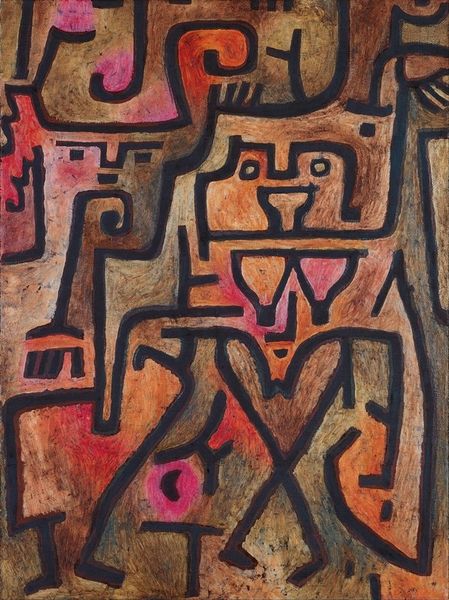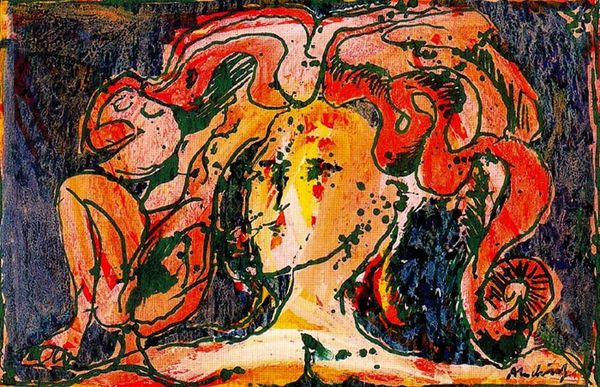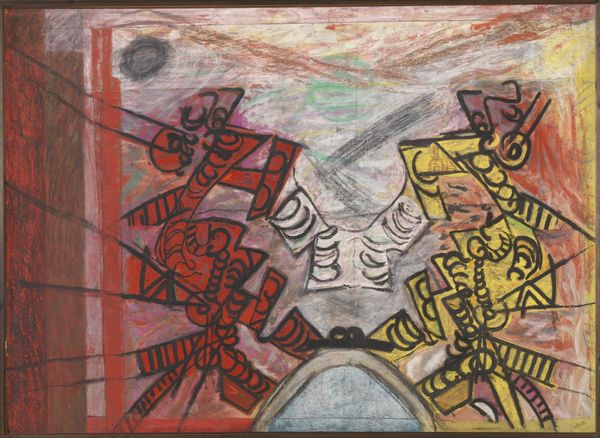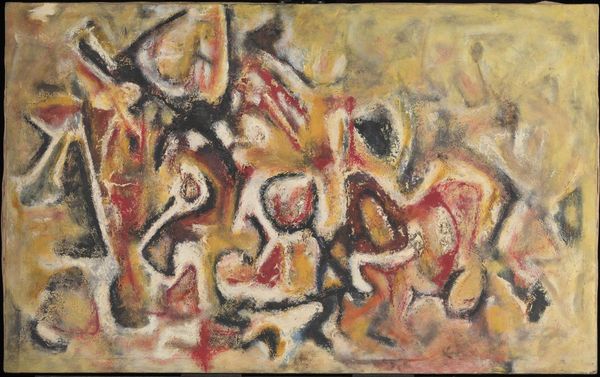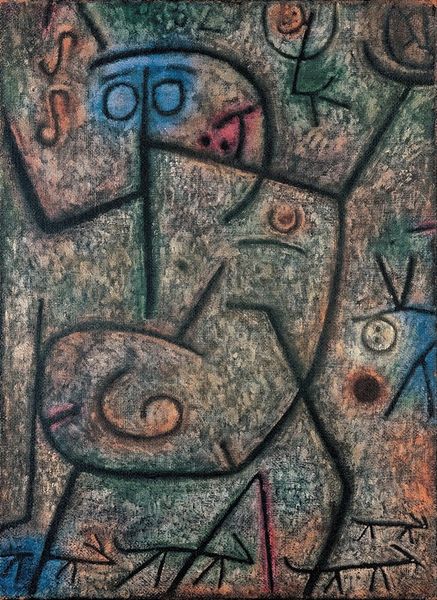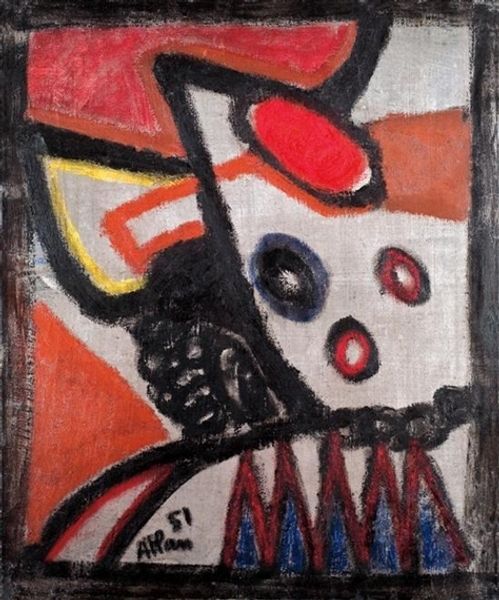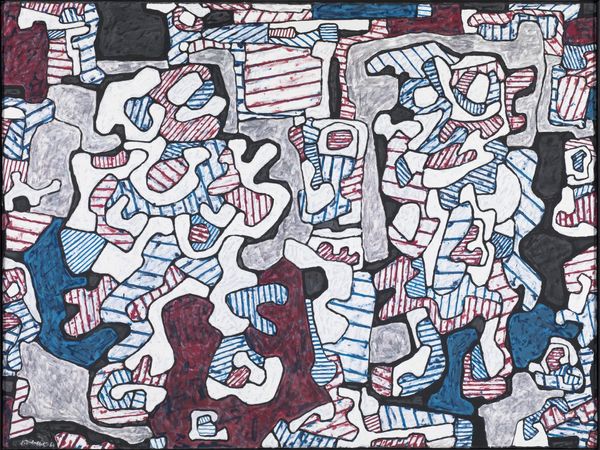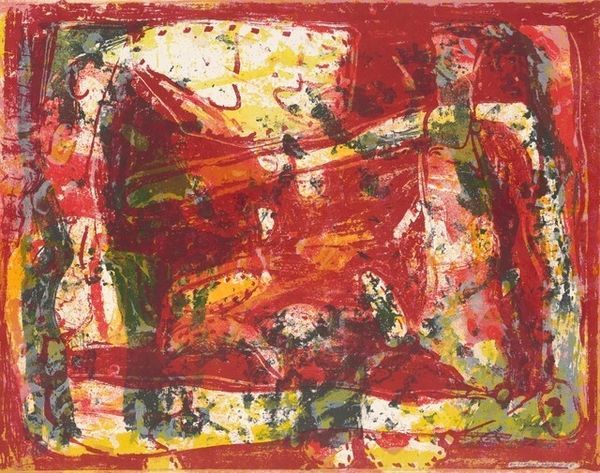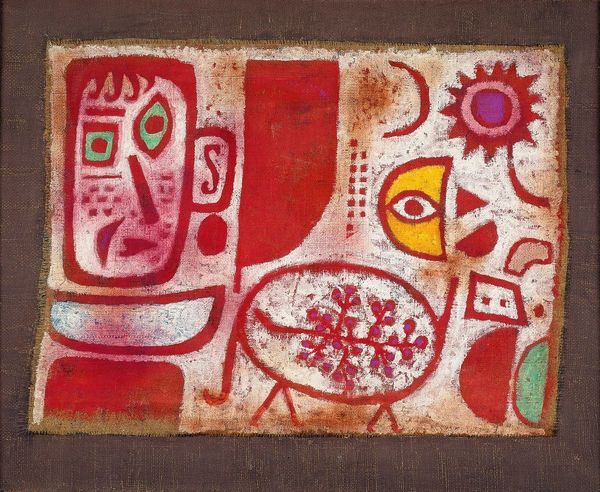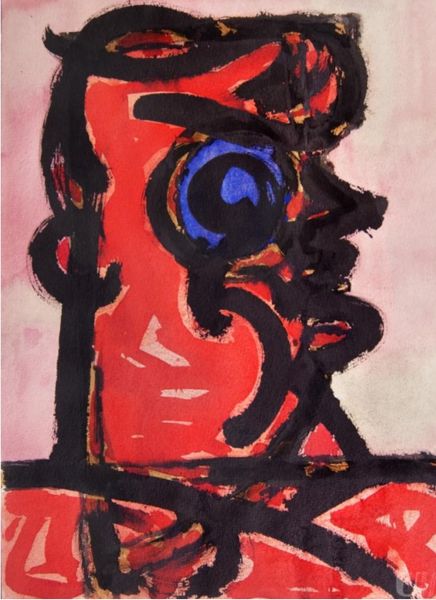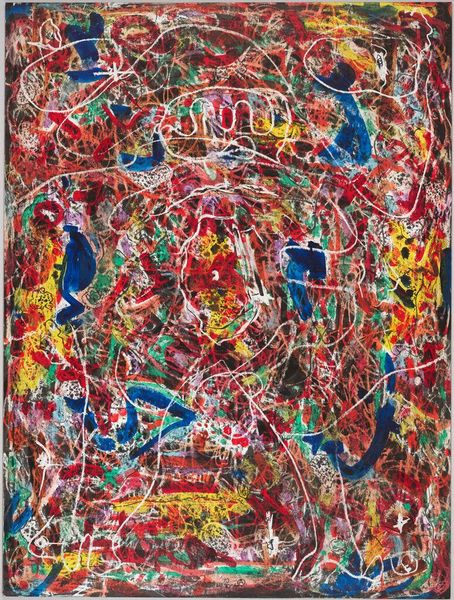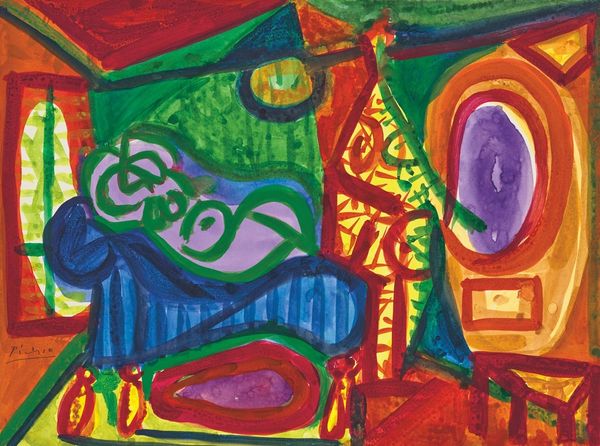
Copyright: Public Domain: Artvee
Curator: What strikes you first about this work? This is Paul Klee's 1938 oil painting, "A Woman For Gods". Editor: The impasto! I'm immediately drawn to the thickness of the paint. Look how crudely it's applied – almost primal, but so expressive! The visible brushstrokes give a tangible sense of its creation. Curator: Indeed! Klee was deeply interested in archaic and child-like imagery. Note the figure's face: the simplified features, the ‘S’ marking, which hints at inscription and the sacred text. This evokes a timeless, universal image of womanhood. Editor: I see that, but to me it speaks more to the harsh material reality that was emerging in Europe at the time. There is very little subtlety to the composition. The aggressive use of red… It's as though the work of art is responding to social forces of aggression in an era defined by fascism. Curator: It is interesting how that crude simplicity invites diverse readings. This choice of color creates a symbolic impact, suggesting vitality but also danger. Consider the ‘woman’ within the title. What if Klee intended not merely a depiction of womankind, but a sacrifice? A feminine offering to appease unseen, powerful forces? Editor: Very plausible, and it speaks to the period. What processes would he have used? I see heavy paint, sure, but did he use found objects as a sort of printing template? This does not feel like a portrait made with brushes alone. The work’s material components had to be sourced in times of conflict too. How available were paints, in such vivid color? I suspect those bright pigments held social significance too. Curator: Precisely, the period in which the artwork was composed definitely influences interpretation, even if not apparent at first. That electric blue focal point seems to represent more than meets the eye – perhaps even the artist himself gazing outwards in this symbolic sacrifice, rendered in oils. Editor: Absolutely, the raw application and bold pigments provide a physical connection to its social origins, and I like how that reflects on us today. Curator: Yes, and for me, it speaks of the long arc of human devotion, ritual, and the persistent attempt to comprehend our place in the cosmos.
Comments
No comments
Be the first to comment and join the conversation on the ultimate creative platform.
